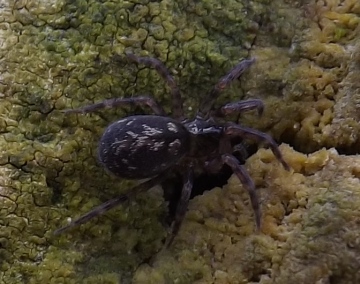Summary for Pelecopsis nemoralioides
|
National Distribution
Terms of Use. Double-click on map to go to region

Explore Regional Distribution
Identification guidance for Pelecopsis nemoralioides
Please log on and add a note on this species
About this species
Recorded altitude range
Species text
DistributionAlmost entirely a coastal species which it is widely distributed on sand dunes in southern Britain, and also with definite records from Argyll, Fife, Ross and Sutherland in Scotland. Roberts (1985) included P. nemoralioides (as P. mediocris and P. locketi) in P. nemoralis though it has been treated as distinct from P. nemoralis in Merrett et al. (1985), Merrett & Millidge (1992) and Merrett & Murphy (2000). This presented problems in the mapping of records submitted to the recording scheme and a decision was made to map coastal records of P. nemoralis as P. nemoralioides in the provisional atlas (Harvey et al., 2000), but the map is bound to present problems in interpretation, especially in the north where it is uncertain whether the same ecological distinction is valid. The species is widespread in north-western Europe as far north as Denmark.
Habitat and ecology
P. nemoralioides is typically found in sandy habitats, particularly coastal sand dunes, amongst marram and other grasses. It has also occurred in steep south-facing chalk grassland in West Kent and on shingle. Both sexes are adult between September and May, but females have been recorded in all months of the year.
Status
Scarce, but the spider may be frequent where it occurs. There is evidence of a long term and substantial decline, which needs clarification. P. nemoralioides is recognised as a senior synonym of P. mediocris (Kulczynski 1899) and P. locketi Cooke 1967 by Wunderlich (1985). Females of these taxa could not be separated by consideration of epigynes or vulvae and males were distinguishable only by a difference in the shape of the cephalic lobes.
Threats
Damage to sand dunes from recreational pressures, particularly that associated with the use of off-road vehicles, may represent a threat at some sites.
Management and conservation
Limit damage to sand dunes resulting from recreational use.
Text based on Dawson, I.K., Harvey, P.R., Merrett, P. & Russell-Smith, A.R. (in prep.). References
Adult Season
Habitats
background methodology
Recorded management for locations with Pelecopsis nemoralioides
Recorded substrate and hydrology for locations with Pelecopsis nemoralioides
Images
sorry, no pictures available for this species yet - if you have an image please log on and upload it
See also A-Z Species Index - A-Z Picture Index - |